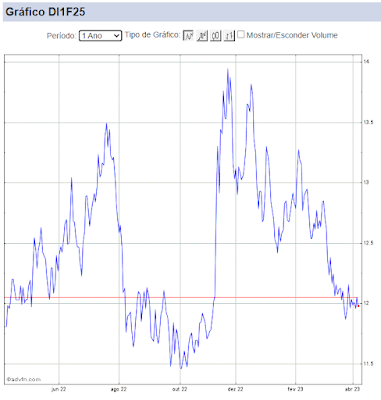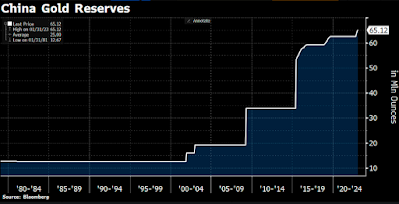Minutas FOMC
Abaixo,
fiz uma breve compilação de trechos das Minutas do FOMC que julgo serem
importantes para o debate de política monetária no país. Acredito que as
Minutas foram mais dovish vis-à-vis os últimos comentários de membros do
Fed. Além disso, desde a último reunião, tivemos novas evidencias de acomodação
do crescimento, assim como novos sinais de que a inflação ficará mais baixa por
tempo ainda mais prolongado do que o imaginado. A divulgação do Core PPI hoje
apenas confirmou este cenário.
Acredito
que a probabilidade de alta de juros em junho tenha se reduzido após as Minutas
e aos últimos números de atividade e inflação no país. Contudo, o Comitê
permanecerá “data dependente”, ou seja, caso a acomodação do crescimento e da
inflação se mostrem pontuais, ainda existe a disposição por parte do FOMC em
começar um processo de ajuste de juros o quanto antes.
As
Minutas deveriam dar ímpeto ao movimento de acomodação/consolidação do USD ao
redor do mundo. Além disso, podemos ter uma pausa no movimento de abertura de
taxas de juros nos EUA, o que deveria ser visto como positivo para os ativos
emergentes. Caso a leitura do mercado seja nesta direção, os mercados locais
(Brasil) de cambio e renda fixa poderiam se favorecer de um ambiente externo
onde os juros americano permanecerá baixo por um tempo ainda mais prolongado do
que o imaginado nos últimos dias. Vale lembrar que a Treasury 10 anos abriu de
1.63% para 2.15% ao longo deste mês, se mostrando um “vento contrário” forte ao
desempenho dos ativos emergentes nas últimas semanas.
O trecho que julgo ser o mais
explicativo do pensamento reinante no FOMC, cujo o vies acredito ter sido dovish:
A number of participants
suggested that they would need to see further improvement in labor market
conditions and data pointing to continued growth in real activity at a pace
sufficient to support additional labor market gains before beginning policy normalization.
Many participants indicated that such economic conditions would help bolster
their confidence in the likelihood of inflation moving toward the Committee's 2
percent objective after the transitory effects of lower energy prices and other
factors dissipate. Some participants noted that their confidence in inflation
returning to 2 percent would also be bolstered by stable or rising levels of
core PCE inflation, or of alternative series, such as trimmed mean or median
measures of inflation. A number of participants emphasized that they would need
to see either an increase in market-based measures of inflation compensation or
evidence that continued low readings on these measures did not constitute
grounds for concern. Several participants indicated that signs of improvements
in labor compensation would be an important signal, while a few others
deemphasized the value of labor compensation data for judging incipient
inflation pressures in light of the loose short-run empirical connection
between wage and price inflation.
Externo e USD: However, the increase in
the foreign exchange value of the dollar was expected to be a persistent source
of restraint on U.S. net exports, and a few participants pointed to the risk
that the dollar could appreciate further. In addition, the slowdown of growth
in China was noted as a factor restraining economic expansion in a number of
countries, and several continuing risks to the international economic outlook
were cited, including global disinflationary pressure, tensions in the Middle
East and Ukraine, and financial uncertainty in Greece. Overall, the risks to the
outlook for U.S. economic activity and the labor market were seen as nearly
balanced.
Inflação: Participants noted that
inflation had moved further below the Committee's longer-run objective, largely
reflecting declines in energy prices and other transitory factors. A number of
participants observed that, with anchored inflation expectations, the fall in
energy prices should not leave an enduring imprint on aggregate inflation. It
was pointed out that the recent intensification of downward pressure on
inflation reflected price movements that were concentrated in a narrow range of
items in households' consumption basket, a pattern borne out by trimmed mean
measures of inflation. Several participants
remarked that inflation measures that excluded energy items had also moved down
in recent months, but these declines partly reflected transitory factors,
including downward pressure on import prices and the pass-through of lower
energy costs to the prices of non- energy items. Nonetheless, several
participants saw the continuing weakness of core inflation measures as a
concern. In addition, a few participants
suggested that the weakness of nominal wage growth indicated that core and
headline inflation could take longer to return to 2 percent than the Committee
anticipated. In contrast, a couple of participants suggested that nominal wage
growth provides little information about the future behavior of price
inflation. Participants also discussed the possibility that, because of the
infrequent occurrence of reductions in nominal wages, wages may not have fully
adjusted downward in the period of high unemployment, and therefore pent-up
wage deflation might have weighed on wage gains for a time during the expansion.
If this was the case, nominal wage growth could be expected to pick up in
coming periods and to resume a more normal relationship with labor market
slack. Most participants expected that continuing reductions in resource slack
would be helpful in returning inflation over the medium term to the Committee's
2 percent longer-run objective, but a few participants voiced concern that
nominal wage growth might rise rapidly and inflation might exceed 2 percent for
a time.
Participants discussed the sizable
decline in market-based measures of inflation compensation that had been
observed over the past year and continued over the intermeeting period. A
number of them judged that the decline mostly reflected a reduction in the risk
premiums embedded in nominal interest rates rather than a decline in inflation
expectations; this interpretation was supported by results of some analytical
models used to decompose movements in market-based measures of inflation
compensation and also by the continuing stability of survey-based measures of
inflation expectations. However, other participants put some weight on the
possibility that the decline in inflation compensation reflected a reduction in
expected inflation. These participants further argued that the stability of survey-based
measures of inflation expectations should not be taken as providing much
reassurance; in particular, it was noted that in
Japan in the late 1990s and early 2000s, survey-based measures of longer-term
inflation expectations had not recorded major declines even as a
disinflationary process had become entrenched. In addition, a few participants
argued that even if the shift down in inflation compensation reflected lower
inflation risk premiums rather than reductions in expected inflation, policymakers
might still want to take that decline into account because it could reflect
increased concern on the part of investors about adverse outcomes in which low
inflation was accompanied by weak economic activity. Participants generally
agreed that the behavior of market-based measures of inflation compensation
needed to be monitored closely.
Juros: Many participants indicated
that their assessment of the balance of risks associated with the timing of the
beginning of policy normalization had inclined them toward keeping the federal
funds rate at its effective lower bound for a longer time. Some observed that,
even with these risks taken into consideration, the federal funds rate may have
already been kept at its lower bound for a sufficient length of time, and that
it might be appropriate to begin policy firming in the near term. Regardless of the particular strategy
undertaken, it was noted that, provided that the data-dependent nature of the
path for the federal funds rate after its initial increase could be
communicated to financial markets and the general public in an effective
manner, the precise date at which firming commenced would have a less important
bearing on economic outcomes.
Participants discussed the economic
conditions that they anticipate will prevail at the time they expect it will be
appropriate to begin normalizing policy. There was wide agreement that it would
be difficult to specify in advance an exhaustive list of economic indicators
and the values that these indicators would need to take. Nonetheless, a number of participants suggested that they
would need to see further improvement in labor market conditions and data
pointing to continued growth in real activity at a pace sufficient to support
additional labor market gains before beginning policy normalization. Many
participants indicated that such economic conditions would help bolster their
confidence in the likelihood of inflation moving toward the Committee's 2
percent objective after the transitory effects of lower energy prices and other
factors dissipate. Some participants noted that their confidence in inflation
returning to 2 percent would also be bolstered by stable or rising levels of
core PCE inflation, or of alternative series, such as trimmed mean or median
measures of inflation. A number of participants emphasized that they would need
to see either an increase in market-based measures of inflation compensation or
evidence that continued low readings on these measures did not constitute
grounds for concern. Several participants indicated that signs of improvements
in labor compensation would be an important signal, while a few others
deemphasized the value of labor compensation data for judging incipient
inflation pressures in light of the loose short-run empirical connection
between wage and price inflation.


Comentários
Postar um comentário